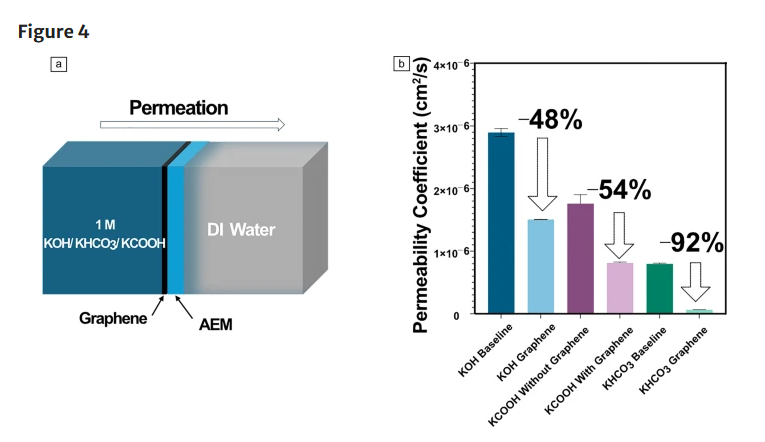Materials Science & Engineering graduate students, Shan Kutagulla and Patrick Carmichael, collaborated with other Cockrell School students and faculty to improve clean energy technologies that turn carbon dioxide (CO₂) into useful products.
One challenge is that the special filters used in these systems (called anion-exchange membranes) often let through the wrong types of particles, which hurts performance. Ideally, these filters should allow hydroxide ions (a key ingredient for the reaction) to pass through, but they also let in other unwanted particles like bicarbonate and formate.
To fix this, the group added a super-thin layer of graphene—a material known for its strength and conductivity—to the membrane. This new design significantly reduced the amount of unwanted particles getting through, while still allowing enough of the useful hydroxide ions to pass. In fact, the graphene-enhanced membrane was up to 5.5 times better at filtering out the wrong particles compared to the original version.

This breakthrough could help make CO₂ conversion systems more efficient and reliable, bringing us closer to cleaner energy solutions. Read more of their work in their MRS Bulletin article, "Monolayer graphene mediated OH−/HCO3− selectivity enhancement in Sustainion anion-exchange membranes."
This work was done in collaboration with Dr. Deji Akinwande's Nano Research Group, Dr. Manish Kumar's Research Group, and Harrington Faculty Fellow Dr. Piran Kidambi (now at the University of Florida).

